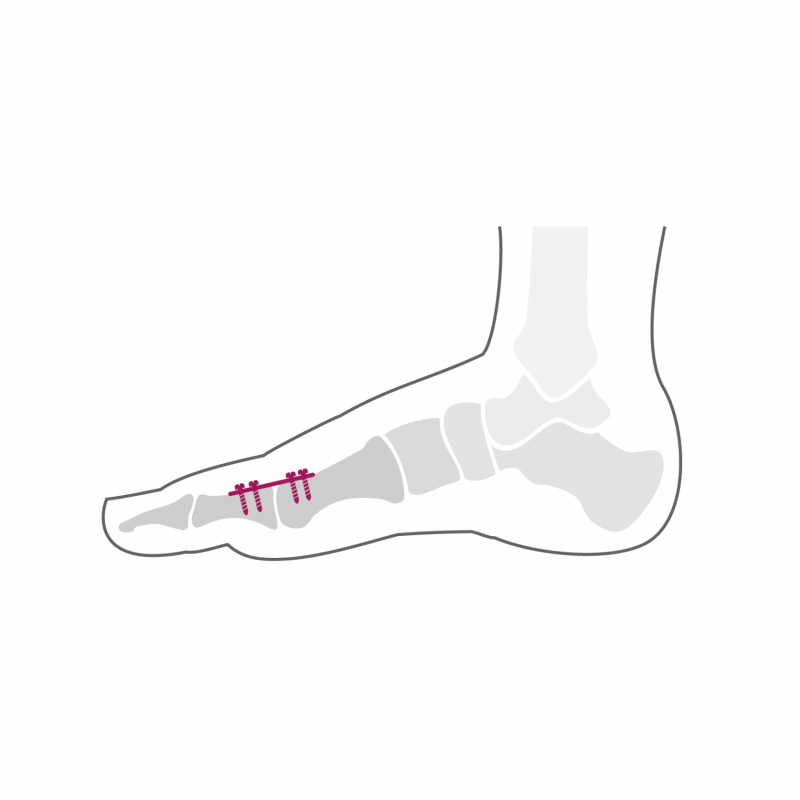Arthrodesis

The arthrodesis means the blocking of a joint. Arthrodesis is often necessary when a joint has advanced osteoarthritis characterized by almost total wear of the articular cartilage or in case of major deformation where a corrective osteotomy is no longer possible.
The arthrodesis of the big toe joint is most commonly performed in foot surgery. We also practice arthrodesis of the midfoot joints (Lisfranc arthrodesis) or the hindfoot (Chopart arthrodesis or subtalar arthrodesis). To perform an arthrodesis, the joint surfaces must be prepared and cleaned of the remaining cartilage in order to obtain a well vascularized bone surface. The arthrodesis must be optimally positioned to ensure the best possible function of the blocked joint and the entire foot. The arthrodesis is most often stabilized using titanium screws or plates. In the event of a forefoot arthrodesis, a total load in rigid sole shoes is authorized immediately. In the case of a blockage of the midfoot and hindfoot joints, immobilization in a removable plastered boot is necessary for a period of 6 weeks, the first two weeks in total discharge, followed by 4 weeks in partial load of 15 kg.
Ankle arthrodesis represents a special situation. The ankle is an essential joint in order to ensure a harmonious pace. In case of blockage of this joint, the overall function of the foot is greatly disturbed. The joints close to the ankle must then compensate for the loss of movement of the ankle, which can quickly lead to wear of these joints, requiring additional arthrodesis even more compromising the function of the foot. This is the reason why a prosthetic ankle replacement was developed. If the bone conditions and the condition of the surrounding tissues allow it, the fitting of a total prosthesis will be preferred to arthrodesis in the case of advanced and disabling osteoarthritis of the ankle.
